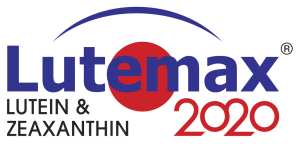New Study Finds No Additional Benefit from (RS) Meso-Zeaxanthin
A study by co-author John Nolan, PhD, of the Macular Pigment Research Group at Waterford Institute of Technology and presented at the 18th International Symposium on Carotenoids in Lucerne, Switzerland, showed that the addition of (RS) meso-zeaxanthin, a non-dietary carotenoid found in many eye health supplements, contributes no additional efficacy for eye health in people with non-advanced age-related macular degeneration (early AMD). The findings from the Central Retinal Enrichment Supplementation Trials (CREST) add doubt to the need for supplement formulations containing (RS) meso-zeaxanthin.
The CREST study examined the effect of adding (RS) meso-zeaxanthin to the standard National Eye Institute’s Age-Related Eye Disease Study 2 (AREDS2) formula of 10 mg lutein and 2 mg zeaxanthin, plus low zinc. The study participants were randomly assigned to one of two AREDS2 (with low zinc) treatment groups: with 10 mg (RS) meso-zeaxanthin or no (RS) meso-zeaxanthin. After 24 months of follow-up in 98 participants with early AMD, there were no significant differences in measures of macular pigment or visual function between the treatments.1
“Supplement manufacturers should be aware that all ‘zeaxanthin’ is not the same. Some products are misrepresented as containing natural and dietary ‘zeaxanthin’ but contain a non-dietary, synthetic, zeaxanthin stereoisomer—3R, 3’S- zeaxanthin, or (RS) meso-zeaxanthin, which is one of three ‘zeaxanthin’ stereoisomers,” said Richard Roberts, PhD, Kemin Principal Manager, Technical Services. “The findings are important because they build on the available evidence that suggests there is no additional benefit of adding (RS) meso-zeaxanthin to eye health supplements.”
(RS) Meso-zeaxanthin contained in dietary supplements is synthetically made from lutein using high heat and a strong alkaline environment.2 Research also indicates that (RS) meso-zeaxanthin present in the macula is made from dietary lutein and that supplemental (RS) meso-zeaxanthin may actually compete with lutein and zeaxanthin for absorption, keeping these important antioxidants from reaching the macula in the amounts needed for eye health.3,4,5
“Eye health supplement formulators should ask if all ingredients used in their product formulations are supported by science for safety and effectiveness,” said Ceci Snyder, Global Vision Product Manager. FloraGLO® Lutein, which contains the same dietary forms of lutein and zeaxanthin as found in common foods such as spinach, kale and broccoli, is a quality lutein backed by science. FloraGLO is supported by over 80 human clinical trial publications and is the number one recommended lutein brand by eye doctors.6,7
The current study findings resulted from a European Research Council grant for the Central Retinal Enrichment Supplementation Trials (CREST). The research was conducted at the Macular Pigment Research Group, which is part of the Nutrition Research Centre Ireland at the School of Health Science, Waterford Institute of Technology in Waterford, Ireland. Study participants were diagnosed with early AMD. The findings continue to support the National Eye Institute’s AREDS2 formulation with 10 mg of FloraGLO Lutein and 2 mg zeaxanthin as the standard eye health supplement formulation for age-related eye conditions.









